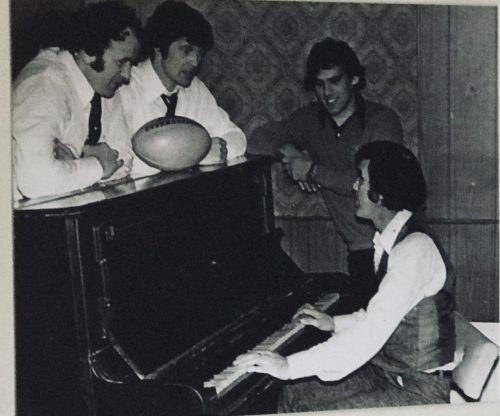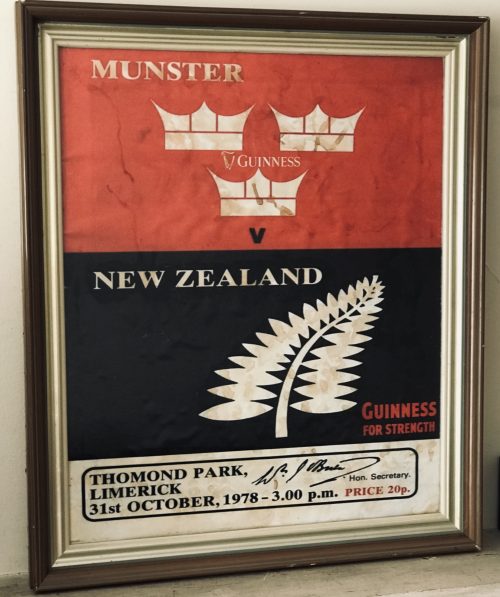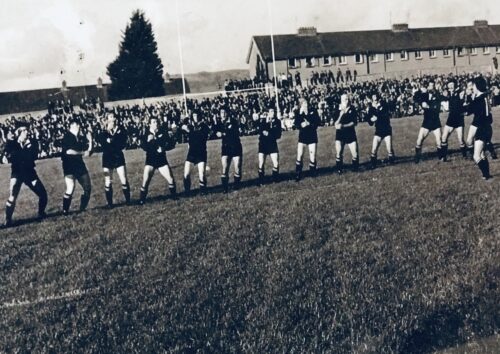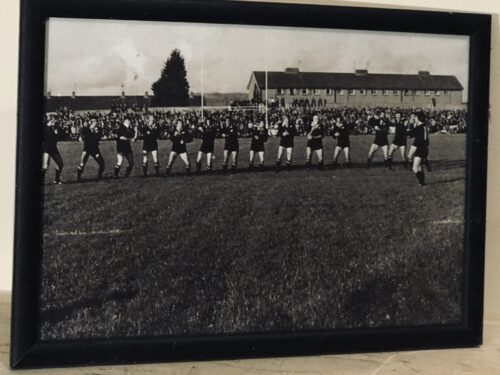Beautiful and poignant collection of four of the 1916 Easter Rising Rebel Leaders who were executed by the British Crown Forces at Kilmainham Jail a few weeks later.Featured here are Padraig Pearse,Thomas Clarke,James Connolly,Thomas Kent.
James Connolly (5 June 1868 – 12 May 1916) was an
Irish republican and
socialist leader.
Connolly was born in the
Cowgate area of
Edinburgh, Scotland, to Irish parents. He left school for working life at the age of 11. He also took a role in
Scottish and
American politics. He was a member of the
Industrial Workers of the World and founder of the
Irish Socialist Republican Party. With
James Larkin, he was centrally involved in the
Dublin lock-out of 1913, as a result of which the two men formed the
Irish Citizen Army (ICA) that year. He opposed
British rule in Ireland, and was one of the leaders of the
Easter Rising of 1916. He was executed by firing squad following the Rising.
Early life
Connolly was born in an Edinburgh slum in 1868, the third son of Irish parents John Connolly and Mary McGinn.
His parents had moved to Scotland from
County Monaghan, Ireland, and settled in the Cowgate, a
ghetto where thousands of Irish people lived.
He spoke with a Scottish accent throughout his life.
He was born in
St Patrick's Roman Catholic parish, in the Cowgate district of Edinburgh known as "Little Ireland".
His father and grandfathers were labourers.
He had an education up to the age of about ten in the local Catholic primary school.
He left and worked in labouring jobs. Owing to the economic difficulties he was having,
like his eldest brother John, he joined the
British Army.
He enlisted at age 14,
falsifying his age and giving his name as Reid, as his brother John had done.
He served in Ireland with the 2nd Battalion of the
Royal Scots Regiment for nearly seven years, during a turbulent period in rural areas known as the
Land War.
He would later become involved in the land issue.
He developed a deep hatred for the British Army that lasted his entire life.
When he heard that his regiment was being transferred to India, he deserted.
Connolly had another reason for not wanting to go to India; a young woman by the name of
Lillie Reynolds.
Lillie moved to Scotland with James after he left the army and they married in April 1890.
They settled in Edinburgh. There, Connolly began to get involved in the
Scottish Socialist Federation,
[17] but with a young family to support, he needed a way to provide for them.
He briefly established a
cobbler's shop in 1895, but this failed after a few months
as his shoe-mending skills were insufficient.
He was strongly active with the socialist movement at the time, and prioritized this over his cobbling.
Socialist involvement
After Ireland is free, says the patriot who won't touch Socialism, we will protect all classes, and if you won't pay your rent you will be evicted same as now. But the evicting party, under command of the sheriff, will wear green uniforms and the
Harp without the Crown, and the warrant turning you out on the roadside will be stamped with the arms of the Irish Republic.
In the 1880s, Connolly became influenced by
Friedrich Engels and
Karl Marx and would later advocate a type of socialism that was based in
Marxist theory.
[21] Connolly described himself as a socialist, while acknowledging the influence of Marx.
He became secretary of the Scottish Socialist Federation. At the time his brother John was secretary; after John spoke at a rally in favour of the
eight-hour day, however, he was fired from his job with the Edinburgh Corporation, so while he looked for work, James took over as secretary. During this time, Connolly became involved with the
Independent Labour Party which
Keir Hardie had formed in 1893. At some time during this period, he took up the study of, and advocated the use of, the neutral international language,
Esperanto.
His interest in Esperanto is implicit in his 1898 article "The Language Movement", which primarily attempts to promote socialism to the nationalist revolutionaries involved in the Gaelic Revival.
By 1892 he was involved in the
Scottish Socialist Federation, acting as its secretary from 1895. Two months after the birth of his third daughter, word came to Connolly that the Dublin Socialist Club was looking for a full-time secretary, a job that offered a salary of a pound a week.
Connolly and his family moved to Dublin,
where he took up the position. At his instigation, the club quickly evolved into the
Irish Socialist Republican Party (ISRP).
The ISRP is regarded by many Irish historians as a party of pivotal importance in the early history of Irish socialism and republicanism. While active as a socialist in Great Britain, Connolly was the founding editor of
The Socialist newspaper and was among the founders of the
Socialist Labour Partywhich split from the
Social Democratic Federation in 1903. Connolly joined Maud Gonne and Arthur Griffith in the Dublin protests against the
Boer War.
A combination of frustration with the progress of the ISRP and economic necessity caused him to emigrate to the United States in September 1903, with no plans as to what he would do there.
While in America he was a member of the
Socialist Labor Party of America (1906), the
Socialist Party of America (1909) and the
Industrial Workers of the World, and founded the
Irish Socialist Federation in New York, 1907. He famously had a chapter of his 1910 book
Labour in Irish History entitled "A chapter of horrors:
Daniel O’Connell and the working class." critical of the achiever of
Catholic Emancipation 60 years earlier.
On Connolly's return to Ireland in 1910 he was right-hand man to
James Larkin in the
Irish Transport and General Workers Union. He stood twice for the Wood Quay ward of
Dublin Corporation but was unsuccessful. His name, and those of his family, appears in the 1911 Census of Ireland - his occupation is listed as "National Organiser Socialist Party".
In 1913, in response to the
Lockout, he, along with an ex-British officer,
Jack White, founded the
Irish Citizen Army (ICA), an armed and well-trained body of labour men whose aim was to defend workers and strikers, particularly from the frequent brutality of the
Dublin Metropolitan Police. Though they only numbered about 250 at most, their goal soon became the establishment of an independent and socialist Irish nation. He also founded the
Irish Labour Party as the political wing of the
Irish Trades Union Congress in 1912 and was a member of its National Executive. Around this time he met
Winifred Carney in
Belfast, who became his secretary and would later accompany him during the
Easter Rising. Like
Vladimir Lenin, Connolly opposed the
First World War explicitly from a socialist perspective. Rejecting the
Redmondite position, he declared "I know of no foreign enemy of this country except the British Government."
Easter Rising
Connolly and the ICA made plans for an armed uprising during the war, independently of the
Irish Volunteers. In early 1916, believing the Volunteers were dithering, he attempted to goad them into action by threatening to send the ICA against the
British Empire alone, if necessary. This alarmed the members of the
Irish Republican Brotherhood, who had already infiltrated the Volunteers and had plans for an insurrection that very year. In order to talk Connolly out of any such rash action, the IRB leaders, including
Tom Clarke and
Patrick Pearse, met with Connolly to see if an agreement could be reached. During the meeting, the IRB and the ICA agreed to act together at
Easter of that year.
During the
Easter Rising, beginning on 24 April 1916, Connolly was Commandant of the Dublin Brigade. As the Dublin Brigade had the most substantial role in the rising, he was
de factocommander-in-chief. Connolly's leadership in the Easter rising was considered formidable.
Michael Collins said of Connolly that he "would have followed him through hell."
Following the surrender, he said to other prisoners: "Don't worry. Those of us that signed the proclamation will be shot. But the rest of you will be set free."
Death
Connolly was not actually held in gaol, but in a room (now called the "Connolly Room") at the State Apartments in
Dublin Castle, which had been converted to a first-aid station for troops recovering from the
war.
Connolly was sentenced to death by firing squad for his part in the rising. On 12 May 1916 he was taken by military ambulance to
Royal Hospital Kilmainham, across the road from
Kilmainham Gaol, and from there taken to the gaol, where he was to be executed. While Connolly was still in hospital in Dublin Castle, during a visit from his wife and daughter, he said: "The Socialists will not understand why I am here; they forget I am an Irishman."
Connolly had been so badly injured from the fighting (a doctor had already said he had no more than a day or two to live, but the execution order was still given) that he was unable to stand before the firing squad; he was carried to a prison courtyard on a stretcher. His absolution and last rites were administered by a
Capuchin, Father Aloysius Travers. Asked to pray for the soldiers about to shoot him, he said: "I will say a prayer for all men who do their duty according to their lights."
Instead of being marched to the same spot where the others had been executed, at the far end of the execution yard, he was tied to a chair and then shot.
His body (along with those of the other leaders) was put in a mass grave without a coffin. The executions of the rebel leaders deeply angered the majority of the Irish population, most of whom had shown no support during the rebellion. It was Connolly's execution that caused the most controversy.
Historians have pointed to the manner of execution of Connolly and similar rebels, along with their actions, as being factors that caused public awareness of their desires and goals and gathered support for the movements that they had died fighting for.
The executions were not well received, even throughout Britain, and drew unwanted attention from the United States, which the British Government was seeking to bring into the war in Europe.
H. H. Asquith, the Prime Minister, ordered that no more executions were to take place; an exception being that of
Roger Casement, who was charged with
high treasonand had not yet been tried.
Family
James Connolly and his wife Lillie had seven children.
Nora became an influential writer and campaigner within the Irish-republican movement as an adult.
Roddy continued his father's politics. In later years, both became members of the
Oireachtas (Irish parliament). Moira became a doctor and married
Richard Beech.
One of Connolly's daughters Mona died in 1904 aged 13, when she burned herself while she did the washing for an aunt.
Three months after James Connolly's execution his wife was received into the Catholic Church, at Church St. on 15 August.
Legacy

Statue of James Connolly in Dublin
Connolly's legacy in Ireland is mainly due to his contribution to the
republican cause; his legacy as a socialist has been claimed by a variety of left-wing and left-republican groups, and he is also associated with the Labour Party which he founded. Connolly was among the few European members of the
Second International who opposed, outright,
World War I. This put him at odds with most of the socialist leaders of Europe.
He was influenced by and heavily involved with the radical
Industrial Workers of the World labour union, and envisaged socialism as Industrial Union control of production. Also he envisioned the IWW forming their own political party that would bring together the feuding socialist groups such as the
Socialist Labor Party of America and the
Socialist Party of America.
Likewise, he envisaged independent Ireland as a socialist republic. His connection and views on Revolutionary Unionism and Syndicalism have raised debate on if his image for a workers republic would be one of State or Grassroots socialism.
For a time he was involved with
De Leonism and the
Second International until he later broke with both.
In Scotland, Connolly's thinking influenced socialists such as
John Maclean, who would, like him, combine his leftist thinking with nationalist ideas when he formed the
Scottish Workers Republican Party.

Statue of James Connolly in Belfast
The
Connolly Association, a British organisation campaigning for Irish unity and independence, is named after Connolly.
In 1928, Follonsby miners' lodge in the Durham coalfield unfurled a newly designed banner that included a portrait of Connolly on it. The banner was burned in 1938, replaced but then painted over in 1940. A reproduction of the 1938 Connolly banner was commissioned in 2011 by the Follonsby Miners’ Lodge Banner Association and it is regularly paraded at various events in County Durham ('Old King Coal' at Beamish Open Air museum, 'The Seven men of Jarrow' commemoration every June, the
Durham Miners' Gala every second Saturday in July, the Tommy Hepburn annual memorial every October), in the wider UK and Ireland.
There is a statue of James Connolly in Dublin, outside
Liberty Hall, the offices of the
SIPTU trade union. Another statue of Connolly stands in Union Park, Chicago near the offices of the
UE union. There is a bust of Connolly in
Troy, New York, in the park behind the statue of Uncle Sam.
In March 2016 a statue of Connolly was unveiled by
Department of Culture, Arts and Leisure minister
Carál Ní Chuilín, and Connolly's great grandson, James Connolly Heron, on
Falls Road in Belfast.
In a 1972 interview on
The Dick Cavett Show,
John Lennon stated that James Connolly was an inspiration for his song, "
Woman Is the Nigger of the World". Lennon quoted Connolly's 'the female is the slave of the slave' in explaining the feminist inspiration for the song.
Connolly Station, one of the two main railway stations in Dublin, and
Connolly Hospital, Blanchardstown, are named in his honour.
In a 2002,
BBC television production,
100 Greatest Britons where the British public were asked to register their vote, Connolly was voted in 64th place.
In 1968, Irish group
The Wolfe Tones released a single named "James Connolly", which reached number 15 in the Irish charts.
The band
Black 47 wrote and performed a song about Connolly that appears on their album
Fire of Freedom. Irish singer-songwriter Niall Connolly has a song
"May 12th, 1916 - A Song for James Connolly" on his album
Dream Your Way Out of This One(2017).
 The 1938 All-Ireland Football Final Replay on October 23rd, 1938 ended in the most bizarre fashion imaginable when with 2 minutes left to play, Galway supporters, mistakenly believing the referee had blown for full-time, invaded the pitch, causing a 20 minute delay before the final minutes could be played out.
Even more dramatic was the fact that by the time the pitch was cleared, most of the Kerry players seemed to have disappeared.
The 1938 All-Ireland Football Final Replay on October 23rd, 1938 ended in the most bizarre fashion imaginable when with 2 minutes left to play, Galway supporters, mistakenly believing the referee had blown for full-time, invaded the pitch, causing a 20 minute delay before the final minutes could be played out.
Even more dramatic was the fact that by the time the pitch was cleared, most of the Kerry players seemed to have disappeared.
 The confusion all began with a free awarded to Kerry by referee Peter Waters of Kildare with Galway leading the defending champions, by 2-4 to 0-6.
The referee placed the ball and blew his whistle for the kick to be taken while running towards the Galway goals. He looked round just as Sean Brosnan was taking the kick and seeing a Galway player too close he blew for the kick to be retaken.
Thinking that he had blown for full-time the jubilant Galway supporters invaded the pitch.
The confusion all began with a free awarded to Kerry by referee Peter Waters of Kildare with Galway leading the defending champions, by 2-4 to 0-6.
The referee placed the ball and blew his whistle for the kick to be taken while running towards the Galway goals. He looked round just as Sean Brosnan was taking the kick and seeing a Galway player too close he blew for the kick to be retaken.
Thinking that he had blown for full-time the jubilant Galway supporters invaded the pitch.
 It took all of twenty minutes to clear the pitch but only then did the real problems come to light. Jerry O’Leary Chairman of the Kerry Selection Committee outlined their dilemma.
It took all of twenty minutes to clear the pitch but only then did the real problems come to light. Jerry O’Leary Chairman of the Kerry Selection Committee outlined their dilemma.

 Somehow or other Kerry managed to re-field even if the team which played out the remaining minutes bore little resemblance to the starting fifteen.
Somehow or other Kerry managed to re-field even if the team which played out the remaining minutes bore little resemblance to the starting fifteen.
 More remarkable again was the fact that Kerry went on to add another point to their total before the referee finally blew for full-time with Galway winners by 2-4 to 0-7.
It was generally agreed that the confusion was of the crowd’s and not the referee’s making but questions remained about the total number of players Kerry had been permitted to use in those final few minutes.
More remarkable again was the fact that Kerry went on to add another point to their total before the referee finally blew for full-time with Galway winners by 2-4 to 0-7.
It was generally agreed that the confusion was of the crowd’s and not the referee’s making but questions remained about the total number of players Kerry had been permitted to use in those final few minutes.
 The National and Provincial papers and indeed all available Records to this day list only those 16 Kerry players who were involved prior to the 20 minute interruption but now (80 years on) for the first time all the players who played for Kerry in that October 23rd, 1938 All-Ireland Final Replay can be given their rightful place in the Record Books.
KERRY’s 24:
The National and Provincial papers and indeed all available Records to this day list only those 16 Kerry players who were involved prior to the 20 minute interruption but now (80 years on) for the first time all the players who played for Kerry in that October 23rd, 1938 All-Ireland Final Replay can be given their rightful place in the Record Books.
KERRY’s 24:

 That night, in front of a 1,500 crowd, at a Gaelic League organised Siamsa Mór in the Mansion House in Dawson Street, Art McCann presented the Galway team with their winners’ medals.
That night, in front of a 1,500 crowd, at a Gaelic League organised Siamsa Mór in the Mansion House in Dawson Street, Art McCann presented the Galway team with their winners’ medals.
 The Kerry players meanwhile joined 300 of their suppoeters at a Ceilidhe hosted by the Kerrymen’s Social Club in Rathmines Town Hall.
The National Newspapers may not always have reported the facts to Galway’s satisfaction but there can be no questioning the support of Galway County Council.
The Kerry players meanwhile joined 300 of their suppoeters at a Ceilidhe hosted by the Kerrymen’s Social Club in Rathmines Town Hall.
The National Newspapers may not always have reported the facts to Galway’s satisfaction but there can be no questioning the support of Galway County Council.
 Needless to say the Galway players received an unprecedented welcome on their return to Galway having first been feted along the way in Mullingar, Streamstown, Moate and Athlone.
GALWAY – 1938 ALL-IRELAND SENIOR FOOTBALL CHAMPIONS
Needless to say the Galway players received an unprecedented welcome on their return to Galway having first been feted along the way in Mullingar, Streamstown, Moate and Athlone.
GALWAY – 1938 ALL-IRELAND SENIOR FOOTBALL CHAMPIONS
 Back (L-R) Bobby Beggs, Ralph Griffin, John Burke, Jimmy McGauran, Charlie Connolly, Brendan Nestor, Dinny Sullivan, Mick Connaire, Martin Kelly. Front (L-R) Frank Cunniffe, Jackie Flavin, Mick Higgins, John ‘Tull’ Dunne (Capt), Ned Mulholland, Mick Raftery.
Substitutes: (not in photograph) Mick Ryder and Pat McDonagh.
TIME ADDED ON:
Not far behind the controversy surrounding the last few minutes of 1938 All-Ireland Football Final Replay was the controversy surrounding the last few seconds of the drawn match played a month earlier.
Back (L-R) Bobby Beggs, Ralph Griffin, John Burke, Jimmy McGauran, Charlie Connolly, Brendan Nestor, Dinny Sullivan, Mick Connaire, Martin Kelly. Front (L-R) Frank Cunniffe, Jackie Flavin, Mick Higgins, John ‘Tull’ Dunne (Capt), Ned Mulholland, Mick Raftery.
Substitutes: (not in photograph) Mick Ryder and Pat McDonagh.
TIME ADDED ON:
Not far behind the controversy surrounding the last few minutes of 1938 All-Ireland Football Final Replay was the controversy surrounding the last few seconds of the drawn match played a month earlier.

 The sides were level, Kerry 2-06 Galway 3-03, when Kerry’s J.J. Landers sent the ball between the Galway uprights for what looked like the winning point. However the thousands of celebrating Kerry supporters making for the Croke Park exits were soon stopped in their tracks.
The sides were level, Kerry 2-06 Galway 3-03, when Kerry’s J.J. Landers sent the ball between the Galway uprights for what looked like the winning point. However the thousands of celebrating Kerry supporters making for the Croke Park exits were soon stopped in their tracks.
 It was cruel luck on Kerry and while there were many who criticised the referee, Tom Culhane from Glin, County Limerick, for blowing the final whistle while John Joe Landers was it the act of shooting, Kerry’s County Board Chairman Denis J. Bailey wasn’t among them.
At the next Central Council meeting, in a remarkably generous response to the Referee’s Report being read he stated that ‘they in Kerry were quite satisfied with the result’ and ‘They wished to pay a tribute to Galway for their sporting spirit and also to the referee who, in their opinion, carried out his duties very well.’
The Central Council then awarded the two counties £300 each towards the costs of the two-week Collective Training Camps both counties had planned in the lead up to the Replay on October 23rd. Munster Council granted Kerry (pictured here in Collective Training) an additional £100.
It was cruel luck on Kerry and while there were many who criticised the referee, Tom Culhane from Glin, County Limerick, for blowing the final whistle while John Joe Landers was it the act of shooting, Kerry’s County Board Chairman Denis J. Bailey wasn’t among them.
At the next Central Council meeting, in a remarkably generous response to the Referee’s Report being read he stated that ‘they in Kerry were quite satisfied with the result’ and ‘They wished to pay a tribute to Galway for their sporting spirit and also to the referee who, in their opinion, carried out his duties very well.’
The Central Council then awarded the two counties £300 each towards the costs of the two-week Collective Training Camps both counties had planned in the lead up to the Replay on October 23rd. Munster Council granted Kerry (pictured here in Collective Training) an additional £100.
 Prior to that Central Council meeting, General Secretary, Pádraig Ó’Caoimh, received a telephone call from the New York GAA suggesting the replay take place in New York but the request (which was successfully repeated nine years later in 1947) was on this occasion turned down.
However doubts about the Replay even going ahead were immediately raised.
Prior to that Central Council meeting, General Secretary, Pádraig Ó’Caoimh, received a telephone call from the New York GAA suggesting the replay take place in New York but the request (which was successfully repeated nine years later in 1947) was on this occasion turned down.
However doubts about the Replay even going ahead were immediately raised.
 Satisfactory transport arrangements were eventually agreed and the match went ahead although the Kerry supporters who left Tralee on the so-called ‘ghost’ train at 1am on the morning of the October 23rd may still have felt hard done by.
Satisfactory transport arrangements were eventually agreed and the match went ahead although the Kerry supporters who left Tralee on the so-called ‘ghost’ train at 1am on the morning of the October 23rd may still have felt hard done by.
 In the lead-up to the game the Galway selectors expressed their delight at the success of their forwards short hand-passing game against the Kerry backs in the drawn match although there were some worries that not all their players had been able to attend the first week of Collective Training and of course there was Kerry’s Replay record to be considered.
Kerry had previously played in 4 All-Ireland Replays and won them all, a great source of encouragement to the Kerry supporters.
However amid some reports of disharmony within the Kerry camp, following a ‘trial match’ on the Sunday before the Replay, the Kerry selection Committee dropped a real bombshell.
Joe Keohane (Dublin Geraldines) who had been Kerry’s regular full-back for the previous two years and was one of the stars of their 1937 All-Ireland win over Cavan was replaced by young Paddy ‘Bawn’ Brosnan a member of the 1938 Kerry Junior team.
A back injury to Kerry’s best forward, J.J. Landers made him an extreme doubt for the Replay with Martin Regan on stand-by to take his place if required which is exactly what happened before that fateful free-kick, that infamous 20 minute delay and Kerry’s unprecedented use of 24 players.
Most definitely an All-Ireland Final and Final Replay never to be forgotten.
In the lead-up to the game the Galway selectors expressed their delight at the success of their forwards short hand-passing game against the Kerry backs in the drawn match although there were some worries that not all their players had been able to attend the first week of Collective Training and of course there was Kerry’s Replay record to be considered.
Kerry had previously played in 4 All-Ireland Replays and won them all, a great source of encouragement to the Kerry supporters.
However amid some reports of disharmony within the Kerry camp, following a ‘trial match’ on the Sunday before the Replay, the Kerry selection Committee dropped a real bombshell.
Joe Keohane (Dublin Geraldines) who had been Kerry’s regular full-back for the previous two years and was one of the stars of their 1937 All-Ireland win over Cavan was replaced by young Paddy ‘Bawn’ Brosnan a member of the 1938 Kerry Junior team.
A back injury to Kerry’s best forward, J.J. Landers made him an extreme doubt for the Replay with Martin Regan on stand-by to take his place if required which is exactly what happened before that fateful free-kick, that infamous 20 minute delay and Kerry’s unprecedented use of 24 players.
Most definitely an All-Ireland Final and Final Replay never to be forgotten.
 The Galway and Kerry players parade in front of the newly opened (1938) Cusack Stand
The Galway and Kerry players parade in front of the newly opened (1938) Cusack Stand









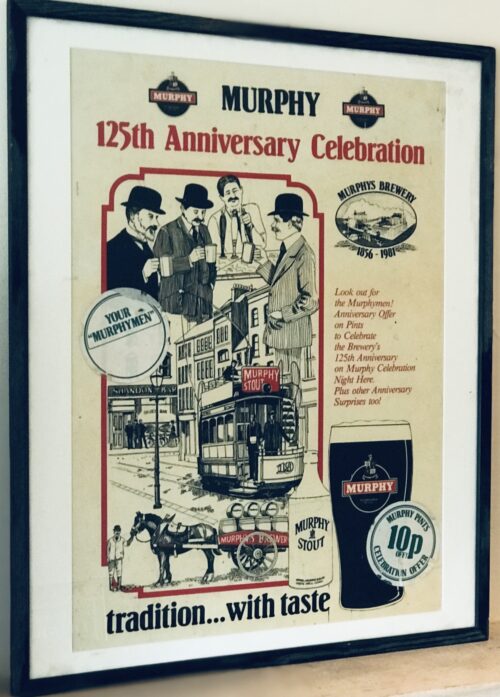




























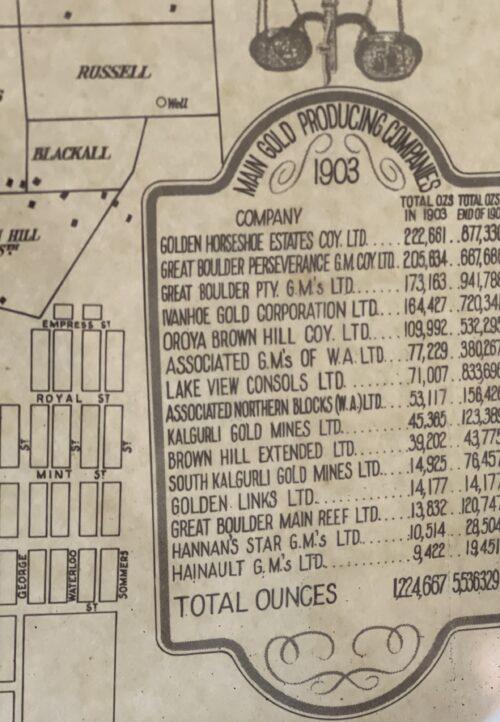
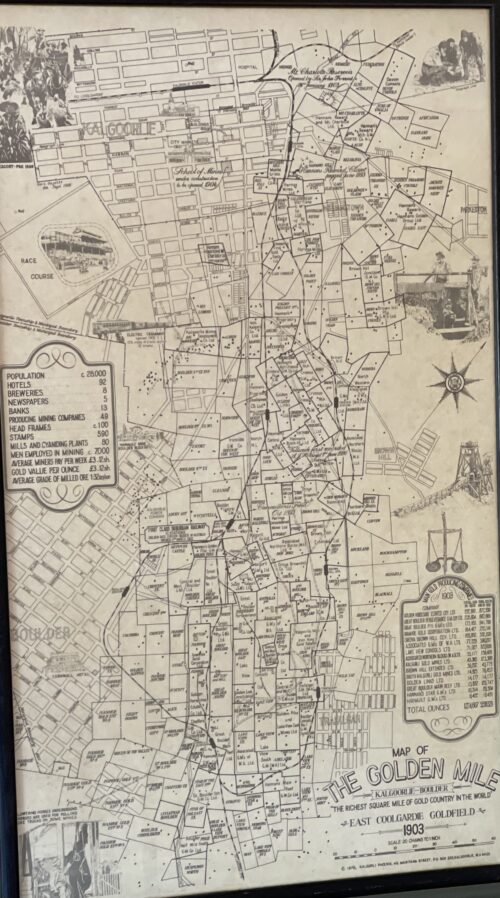
















 Limerick 5-2 Dublin 2-6
D Clohessy 4-0, M Mackey 1-1, J O’Connell 0-1
Limerick 5-2 Dublin 2-6
D Clohessy 4-0, M Mackey 1-1, J O’Connell 0-1











 Tom Moloughney, Jimmy Doyle, and Kieran Carey relax in the dressing room after Tipperary’s victory over Dublin in the 1961 All-Ireland final, a success that was to be repeated the following year. Picture from ‘The GAA — A People’s History’
Tom Moloughney, Jimmy Doyle, and Kieran Carey relax in the dressing room after Tipperary’s victory over Dublin in the 1961 All-Ireland final, a success that was to be repeated the following year. Picture from ‘The GAA — A People’s History’




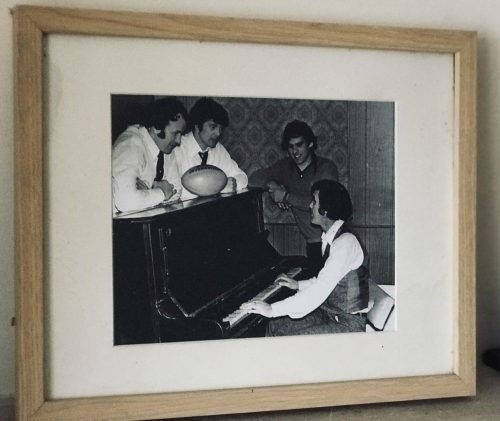

 Many years on, Stuart Wilson vividly recalled the Dennison tackles and spoke about them in remarkable detail and with commendable honesty: “The move involved me coming in from the blind side wing and it had been working very well on tour. It was a workable move and it was paying off so we just kept rolling it out. Against Munster, the gap opened up brilliantly as it was supposed to except that there was this little guy called Seamus Dennison sitting there in front of me.
“He just basically smacked the living daylights out of me. I dusted myself off and thought, I don’t want to have to do that again. Ten minutes later, we called the same move again thinking we’d change it slightly but, no, it didn’t work and I got hammered again.”
The game was 11 minutes old when the most famous try in the history of Munster rugby was scored.
Tom Kiernan recalled: “It came from a great piece of anticipation by Bowen who in the first place had to run around his man to get to Ward’s kick ahead. He then beat two men and when finally tackled, managed to keep his balance and deliver the ball to Cantillon who went on to score. All of this was evidence of sharpness on Bowen’s part.”
Very soon it would be 9-0. In the first five minutes, a towering garryowen by skipper Canniffe had exposed the vulnerability of the New Zealand rearguard under the high ball. They were to be examined once or twice more but it was from a long range but badly struck penalty attempt by Ward that full-back Brian McKechnie knocked on some 15 yards from his line and close to where Cantillon had touched down a few minutes earlier. You could sense White, Whelan, McLoughlin and co in the front five of the Munster scrum smacking their lips as they settled for the scrum. A quick, straight put-in by Canniffe, a well controlled heel, a smart pass by the scrum-half to Ward and the inevitability of a drop goal. And that’s exactly what happened.
The All Blacks enjoyed the majority of forward possession but the harder they tried, the more they fell into the trap set by the wily Kiernan and so brilliantly carried out by every member of the Munster team.
The tourists might have edged the line-out contest through Andy Haden and Frank Oliver but scrum-half Mark Donaldson endured a miserable afternoon as the Munster forwards poured through and buried him in the Thomond Park turf.
As the minutes passed and the All Blacks became more and more unsure as to what to try next, the Thomond Park hordes chanted “Munster-Munster–Munster” to an ever increasing crescendo until with 12 minutes to go, the noise levels reached deafening proportions.
And then ... a deep, probing kick by Ward put Wilson under further pressure. Eventually, he stumbled over the ball as it crossed the line and nervously conceded a five-metre scrum. The Munster heel was disrupted but the ruck was won, Tucker gained possession and slipped a lovely little pass to Ward whose gifted feet and speed of thought enabled him in a twinkle to drop a goal although surrounded by a swarm of black jerseys. So the game entered its final 10 minutes with the All Blacks needing three scores to win and, of course, that was never going to happen.
Munster knew this, so, too, did the All Blacks. Stu Wilson admitted as much as he explained his part in Wardy’s second drop goal: “Tony Ward banged it down, it bounced a little bit, jigged here, jigged there, and I stumbled, fell over, and all of a sudden the heat was on me. They were good chasers. A kick is a kick — but if you have lots of good chasers on it, they make bad kicks look good. I looked up and realised — I’m not going to run out of here so I just dotted it down. I wasn’t going to run that ball back out at them because five of those mad guys were coming down the track at me and I’m thinking, I’m being hit by these guys all day and I’m looking after my body, thank you. Of course it was a five-yard scrum and Ward banged over another drop goal. That was it, there was the game”.
The final whistle duly sounded with Munster 12 points ahead but the heroes of the hour still had to get off the field and reach the safety of the dressing room. Bodies were embraced, faces were kissed, backs were pummelled, you name it, the gauntlet had to be walked. Even the All Blacks seemed impressed with the sense of joy being released all about them. Andy Haden recalled “the sea of red supporters all over the pitch after the game, you could hardly get off for the wave of celebration that was going on. The whole of Thomond Park glowed in the warmth that someone had put one over on the Blacks.”
Controversially, the All Blacks coach, Jack Gleeson (usually a man capable of accepting the good with the bad and who passed away of cancer within 12 months of the tour), in an unguarded (although possibly misunderstood) moment on the following day, let slip his innermost thoughts on the game.
“We were up against a team of kamikaze tacklers,” he lamented. “We set out on this tour to play 15-man rugby but if teams were to adopt the Munster approach and do all they could to stop the All Blacks from playing an attacking game, then the tour and the game would suffer.”
It was interpreted by the majority of observers as a rare piece of sour grapes from a group who had accepted the defeat in good spirit and it certainly did nothing to diminish Munster respect for the All Blacks and their proud rugby tradition.
Many years on, Stuart Wilson vividly recalled the Dennison tackles and spoke about them in remarkable detail and with commendable honesty: “The move involved me coming in from the blind side wing and it had been working very well on tour. It was a workable move and it was paying off so we just kept rolling it out. Against Munster, the gap opened up brilliantly as it was supposed to except that there was this little guy called Seamus Dennison sitting there in front of me.
“He just basically smacked the living daylights out of me. I dusted myself off and thought, I don’t want to have to do that again. Ten minutes later, we called the same move again thinking we’d change it slightly but, no, it didn’t work and I got hammered again.”
The game was 11 minutes old when the most famous try in the history of Munster rugby was scored.
Tom Kiernan recalled: “It came from a great piece of anticipation by Bowen who in the first place had to run around his man to get to Ward’s kick ahead. He then beat two men and when finally tackled, managed to keep his balance and deliver the ball to Cantillon who went on to score. All of this was evidence of sharpness on Bowen’s part.”
Very soon it would be 9-0. In the first five minutes, a towering garryowen by skipper Canniffe had exposed the vulnerability of the New Zealand rearguard under the high ball. They were to be examined once or twice more but it was from a long range but badly struck penalty attempt by Ward that full-back Brian McKechnie knocked on some 15 yards from his line and close to where Cantillon had touched down a few minutes earlier. You could sense White, Whelan, McLoughlin and co in the front five of the Munster scrum smacking their lips as they settled for the scrum. A quick, straight put-in by Canniffe, a well controlled heel, a smart pass by the scrum-half to Ward and the inevitability of a drop goal. And that’s exactly what happened.
The All Blacks enjoyed the majority of forward possession but the harder they tried, the more they fell into the trap set by the wily Kiernan and so brilliantly carried out by every member of the Munster team.
The tourists might have edged the line-out contest through Andy Haden and Frank Oliver but scrum-half Mark Donaldson endured a miserable afternoon as the Munster forwards poured through and buried him in the Thomond Park turf.
As the minutes passed and the All Blacks became more and more unsure as to what to try next, the Thomond Park hordes chanted “Munster-Munster–Munster” to an ever increasing crescendo until with 12 minutes to go, the noise levels reached deafening proportions.
And then ... a deep, probing kick by Ward put Wilson under further pressure. Eventually, he stumbled over the ball as it crossed the line and nervously conceded a five-metre scrum. The Munster heel was disrupted but the ruck was won, Tucker gained possession and slipped a lovely little pass to Ward whose gifted feet and speed of thought enabled him in a twinkle to drop a goal although surrounded by a swarm of black jerseys. So the game entered its final 10 minutes with the All Blacks needing three scores to win and, of course, that was never going to happen.
Munster knew this, so, too, did the All Blacks. Stu Wilson admitted as much as he explained his part in Wardy’s second drop goal: “Tony Ward banged it down, it bounced a little bit, jigged here, jigged there, and I stumbled, fell over, and all of a sudden the heat was on me. They were good chasers. A kick is a kick — but if you have lots of good chasers on it, they make bad kicks look good. I looked up and realised — I’m not going to run out of here so I just dotted it down. I wasn’t going to run that ball back out at them because five of those mad guys were coming down the track at me and I’m thinking, I’m being hit by these guys all day and I’m looking after my body, thank you. Of course it was a five-yard scrum and Ward banged over another drop goal. That was it, there was the game”.
The final whistle duly sounded with Munster 12 points ahead but the heroes of the hour still had to get off the field and reach the safety of the dressing room. Bodies were embraced, faces were kissed, backs were pummelled, you name it, the gauntlet had to be walked. Even the All Blacks seemed impressed with the sense of joy being released all about them. Andy Haden recalled “the sea of red supporters all over the pitch after the game, you could hardly get off for the wave of celebration that was going on. The whole of Thomond Park glowed in the warmth that someone had put one over on the Blacks.”
Controversially, the All Blacks coach, Jack Gleeson (usually a man capable of accepting the good with the bad and who passed away of cancer within 12 months of the tour), in an unguarded (although possibly misunderstood) moment on the following day, let slip his innermost thoughts on the game.
“We were up against a team of kamikaze tacklers,” he lamented. “We set out on this tour to play 15-man rugby but if teams were to adopt the Munster approach and do all they could to stop the All Blacks from playing an attacking game, then the tour and the game would suffer.”
It was interpreted by the majority of observers as a rare piece of sour grapes from a group who had accepted the defeat in good spirit and it certainly did nothing to diminish Munster respect for the All Blacks and their proud rugby tradition.
